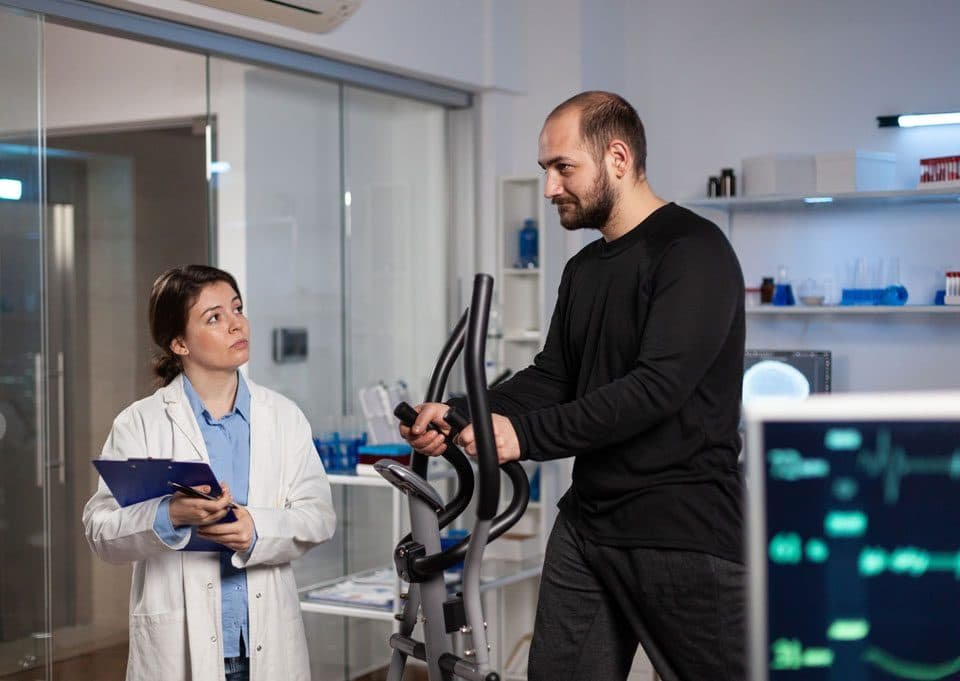Other widely used services at SNOHC:
The Complete Guide to Non-DOT Physical Exams
Table of Contents
ToggleThe Complete Guide to Non-DOT Physical Exams: What You Need to Know for Your Next Check-Up
Are you due for a physical exam but unsure of what to expect? If you work in a non-DOT regulated industry, you may be unfamiliar with the specific requirements and guidelines for your exam. Look no further than this complete guide to non-DOT physical exams. From understanding the purpose and importance of these exams to the various tests and assessments involved, you’ll be fully prepared for your next check-up. We’ll cover everything from vital signs and medical history to vision and hearing tests. We’ll also answer common questions about what to wear and how to prepare for your appointment. Don’t leave your health to chance – arm yourself with the knowledge and confidence to ace your non-DOT physical exam.
What is a Non-DOT Physical Exam?
A non-DOT physical exam is a comprehensive medical examination that evaluates an individual’s overall health and fitness for work. It is typically required for employees who work in non-DOT-regulated industries, such as office workers, teachers, and construction workers. Unlike DOT physical exams, which are mandated by the Department of Transportation (DOT) for individuals in safety-sensitive positions, non-DOT physical exams are not regulated by any federal agency. However, some employers may require their employees to undergo a non-DOT physical exam to ensure they are fit to perform their job duties. During a non-DOT physical exam, a healthcare provider will evaluate an individual’s medical history and vital signs and perform a physical examination. The healthcare provider may also conduct additional tests and evaluations, such as vision and hearing tests, to assess an individual’s overall health and fitness for work. The employer typically uses the results of the non-DOT physical exam to determine an individual’s ability to perform their job duties safely and effectively.
Why are Non-DOT Physical Exams Important?
Non-DOT physical exams are important for several reasons. Firstly, they help ensure employees are healthy and fit to perform their duties. Non-DOT physical exams can help prevent workplace injuries and accidents by identifying underlying health issues or medical conditions. Additionally, non-DOT physical exams can help employers identify potential health risks for their employees, such as high blood pressure or high cholesterol, and provide interventions or referrals to help manage these conditions. Non-DOT physical exams can help employers comply with federal regulations and standards. While any federal agency does not regulate non-DOT physical exams, they may be required by certain industries or employers to ensure compliance with state or local regulations. For example, some states require certain healthcare providers to undergo a non-DOT physical exam to obtain or renew their medical licenses.
Who Needs a Non-DOT Physical Exam?
Individuals who work in non-DOT regulated industries may be required to undergo a non-DOT physical exam. This includes employees who work in offices, schools, construction sites, and other non-safety-sensitive positions. The specific requirements for a non-DOT physical exam may vary depending on the employer, industry, or state regulations. For example, some employers may require a non-DOT physical exam as a condition of employment, while others may require periodic exams for all employees. It is important to check with your employer or human resources department to determine if you must undergo a non-DOT physical exam. Even if your employer does not require a non-DOT physical exam, it is still a good idea to undergo regular physical exams to monitor your overall health and well-being.
What to Expect During a Non-DOT Physical Exam
If you are scheduled for a non-DOT physical exam, you may wonder what to expect during your appointment. Typically, a non-DOT physical exam will consist of several components, including a medical history review, vital signs assessment, and physical examination. During the medical history review, the healthcare provider will ask questions about your health, medical history, and any medications or supplements you may be taking. This information will help the healthcare provider evaluate your overall health and identify potential health risks. Next, the healthcare provider will assess your vital signs, including your blood pressure, heart rate, and
temperature. These measurements can provide important information about your cardiovascular health and overall well-being. Finally, the healthcare provider will perform a physical examination, which may include an evaluation of your eyes, ears, nose, throat, heart, lungs, abdomen, and extremities. The healthcare provider may also conduct additional tests and evaluations, such as vision and hearing tests, to assess your fitness for work.
How to Prepare for a Non-DOT Physical Exam
To ensure a successful non-DOT physical exam, it is important to prepare for your appointment properly. Here are some tips to help you prepare:
1. Dress comfortably: Wear loose-fitting clothing that is easy to remove and allows for a full range of motion.
2. Bring a list of medications: Make a list of any medications, supplements, or vitamins you are currently taking and bring it to your appointment.
3. Get a good night’s sleep: Aim for at least 7-8 hours of sleep the night before your exam to help ensure you are well-rested.
4. Avoid caffeine and alcohol: Avoid consuming caffeine or alcohol for at least 24 hours before your exam, as these substances can affect your blood pressure and heart rate.
Following these tips can help ensure a smooth and successful non-DOT physical exam.
Common Tests and Evaluations During a Non-DOT Physical Exam
During a non-DOT physical exam, the healthcare provider will perform several tests and evaluations to assess your overall health and fitness for work. Here are some common tests and assessments you can expect:
1. Vision and hearing tests: The healthcare provider may perform vision and hearing tests to evaluate your eyesight and hearing acuity.
2. Blood pressure and heart rate measurement: The healthcare provider will measure your blood pressure and heart rate to assess your cardiovascular health.
3. Respiratory evaluation: The healthcare provider may evaluate your breathing and lung function to assess your respiratory health.
4. Urine analysis: The healthcare provider may perform a urine analysis to evaluate your kidney function and detect any potential health issues.
5. Physical examination: The healthcare provider will conduct a physical exam to evaluate your overall health, including your eyes, ears, nose, throat, heart, lungs, abdomen, and extremities.
6. Additional tests: Depending on your medical history and current health status, the healthcare provider may order additional tests and evaluations to assess your fitness for work.
What Happens After a Non-DOT Physical Exam?
After a non-DOT physical exam, the healthcare provider will typically provide you with a report of your results. This report may include your medical history, vital signs, and any performed tests or evaluations. The healthcare provider may provide further evaluation or treatment recommendations if any potential health issues or concerns are identified. Your non-DOT physical exam results may also be shared with your employer. This information will help your employer determine your fitness for work and ensure compliance with applicable regulations or standards.
Where to Get a Non-DOT Physical Exam
Various healthcare providers, including primary care physicians, occupational health clinics (such as SNOHC), and urgent care centers, can perform non-DOT physical exams. Contact your employer or health insurance provider to find a healthcare provider offering non-DOT physical exams.
Frequently Asked Questions About Non-DOT Physical Exams
1. What is the difference between a DOT physical exam and a non-DOT physical exam?
A DOT physical exam is a medical examination required by the Department of Transportation for individuals in safety-sensitive positions, such as commercial truck drivers. Any federal agency does not regulate a non-DOT physical exam, and it is typically required for employees who work in non-safety-sensitive positions.
2. How often do I need to undergo a non-DOT physical exam?
The frequency of non-DOT physical exams may vary depending on your employer, industry, or state regulations. Some employers may require a non-DOT physical exam as a condition of employment, while others may require periodic exams for all employees.
3. What should I bring to my non-DOT physical exam?
You should bring a list of any medications, supplements, or vitamins you are currently taking to your non-DOT physical exam.




